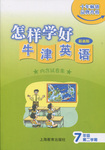
【题目】下列语句中加线的词,解释完全正确的一项是
A.①臣愿得谒之 谒:拜会。 ②秦王购之金千斤 购:购买。
B.①荆轲知太子不忍 忍:狠心。 ②顾计不知所出耳 顾:考虑。
C.①而右手揕其胸 揕:刺。 ②乃令秦武阳为副 副:助手。
D.①不敢兴兵以拒大王 兴:调动。 ②而卒惶急无以击轲 卒:士兵。
 芝麻开花课程新体验系列答案
芝麻开花课程新体验系列答案 怎样学好牛津英语系列答案
怎样学好牛津英语系列答案科目:高中地理 来源: 题型:
【题目】给出以下关于斜二测直观图的结论,其中正确的个数是________.
①角的水平放置的直观图一定是角.
②相等的角在直观图中仍相等.
③相等的线段在直观图中仍然相等.
④若两条线段平行,则在直观图中对应的两条线段仍然平行.
查看答案和解析>>
科目:高中地理 来源: 题型:
【题目】Communication Principles(2009.江苏)
How you see yourself can make a great difference in how you communicate.“Every individual exists in a continually changing world of experience of which he(or she)is the center”.Many communication scholars and social scientists believe that people are products of how others treat them and of the messages others send them.But every day we experience the centrality of our selves in communication.A student.for instance,may describe a conflict with a teacher as unfair treatment:“I know my teacher doesn’t like the fact that I don’t agree with his opinions.and that’s why he gave me such a poor grade in that class.”The teacher might say the opposite.Each person may believe that he is correct and that the other person’s view is wrong.
The concept of serf originates in communication.Through verbal and nonverbal symbols, a child learns to accept roles in response to the expectations of others.You establish self-image。The sort of person you believe you are,by how others think of you.Positive,negative,and neutral messages that you receive from others all play a role in determining who you are.Communication itself is probably best understood as a dialogue process.Our understanding of communication comes from our interactions with other people.In a more obvious way.communication involves others in the sense that a competent communicator considers what the other person needs and expects when selecting messages to share.So,the communication begins with the self,as defined largely by others,and involves others,as defined largely by the self.
Communication Occurs almost every minute of your life.If you are not communicating with yourself(thinking,planning,reacting to the world around you),you are observing others and drawing inferences from their behavior.Even if the other person did not intend a message for you.you gather observations and draw specific conclusions.A person yawns and you believe that person is bored with your message.A second person looks away from you and you conclude that person is not listening to you.A third person smiles(perhaps because of a memory of a joke he heard recently) and you believe that he is attracted to you.We are continually picking up meanings from others’ behaviors and we are constantly providing behaviors that have communicative value for them.
More often than not,you may have hurt someone accidentally and you may have tried to explain that you did not mean that. You may have told the other person that you were sorry for your statement.You may have made a joke out of your rude statement.Nonetheless,your comment remains both in the mind of the other person and in your own mind.You cannot go back in time and erase your messages to others.Communication cannot be reversed(倒退),nor can it be repeated.When you tried to re—create the atmosphere,the conversation,and the setting,nothing seemed right.Your second experience with a similar setting and person made far different results.
Paragraph outline | Supporting Details |
Communication begins with the self | ●People are somewhat products of others’ treatment and messages. ●we are always【1】 in communication with others. |
Communication 【2】 others | ●Experiences of others help children learn to accept roles. ●Messages from others help you【3】 who you are. ●Needs and【4】 of others should be considered. |
Communication【5】 everywhere | ●We are communicating with ourselves by thinking,planning and reacting to the outside world. ●We are always【6】 other people by observing even if they do not intend any message for you. ●We are constantly collecting meanings from others’ 【7】 . ●We are constantly【8】 meanings by what we do. |
Communication cannot be reversed nor repeated | ●You may explain what you have done,but you cannot【9】 what remains in the other person’s mind. ●Yon may redo the conversation,but you【10】 achieve the same results. |
查看答案和解析>>
科目:高中地理 来源: 题型:
【题目】下列关于文章内容分析不正确的一项是
A.荆轲提出以樊将军之首与督亢地图为信物骗取秦王信任,具有超人的胆识和气魄。而太子却“不忍”,由此可知太子是一个胆小怕事的人。
B.太子丹求“天下之利匕首”并“以药淬之”,“令秦武阳为副”在文中用的笔墨很少,是因为这些不是主要情节,这样安排突出文章详略得当,剪裁合理的特征。
C.“易水送别”在众多人物中重点写荆轲,并且重点写慷慨悲歌,同时通过写“士皆垂泪涕泣”“发尽上指冠”渲染凄凉悲怆的氛围和同仇敌忾的气势。
D.本文为了衬托荆轲的英雄形象,运用侧面烘托的手法。写秦武阳“色变振恐”,衬托荆轲镇定自若;写秦王“恐急”“群臣惊愕”,衬托荆轲英雄虎胆。
查看答案和解析>>
科目:高中地理 来源: 题型:
【题目】阅读下面这首宋词,完成后面题目。
西江月①
【宋】苏轼
照野弥弥②浅浪,横空隐隐层霄③。障泥④未解玉骢骄,我欲醉眠芳草。
可惜一溪风月,莫教踏碎琼瑶⑤。解鞍欹枕绿扬桥,杜宇⑤一声春晓。
【注】①此词为苏轼被贬黄州作。其春夜行蕲水边,过酒家,饮醉,乘月至一溪桥上,解鞍,枕臂醉卧少休。拂晓,见乱山攒拥,流水淙淙,宛如仙境,书此词于桥柱上。②弥弥:水波翻动的样子。③层霄:弥漫的云气。④障泥:马鞯,垂于马两侧以挡泥土。⑤杜宇:指杜鹃鸟。
【注】①此词为苏轼被贬黄州作。其春夜行蕲水边,过酒家,饮醉,乘月至一溪桥上,解鞍,枕臂醉卧少休。拂晓,见乱山攒拥,流水淙淙,宛如仙境,书此词于桥柱上。②弥弥:水波翻动的样子。层霄:弥漫的云气古诗词阅读答案 西江月① 【宋】苏轼 照野弥弥②浅浪,横空隐隐层霄古诗词阅读答案 西江月① 【宋】苏轼 照野弥弥②浅浪,横空隐隐层霄。障泥:马鞯,垂于马两侧以挡泥土。杜宇:指杜鹃鸟。
(1)下列对本词的理解,不正确的两项是
A、“障泥未解玉骢骄,我欲醉眠芳草”,写词人临溪流,即从马上下来,等不及卸下马鞯,就欲眠于芳草。既侧面描绘出月下溪景之美,又表现了词人的喜悦心情。
B、“可惜一溪风月,莫教踏碎琼瑶”一句运用了借代的修辞手法。琼瑶,本是美玉,这里指月色;水月交辉,有如晶莹剔透的珠玉。此句传神地写出水月之静美。
C、“解鞍欹枕绿杨桥,杜宇一声春晓”一句用“解鞍欹枕”这个特写镜头表现出词人的随意豁达,而“杜鹃春晓”写出空山春晨的喧闹和生机。
D、诗人于拂晓被杜鹃鸟吵醒,见“乱山攒拥,流水淙淙,宛如仙境”,便书此词,却未写此景,只用“杜宇一声”概之,这是留白写法,让人顿生无限遐想。
E、本词写作者爱惜一溪风月,不让马踏碎溪月,解鞍酣眠直至春晓,描写了一个醉心自然、随性洒脱、乐观豁达的诗人形象。
(2)请从表达手法的角度简要赏析“照野弥弥浅浪,横空隐隐层霄”两句的妙处。
查看答案和解析>>
科目:高中地理 来源: 题型:
【题目】下列句子中,没有错别字的一项是( )
A.是鸟也,海运则将徒于南冥
B.复杯水于坳堂之上,则芥之为舟
C.决起而飞,枪榆枋而止
D.定乎内外之分,辨乎荣辱之境
查看答案和解析>>
湖北省互联网违法和不良信息举报平台 | 网上有害信息举报专区 | 电信诈骗举报专区 | 涉历史虚无主义有害信息举报专区 | 涉企侵权举报专区
违法和不良信息举报电话:027-86699610 举报邮箱:58377363@163.com